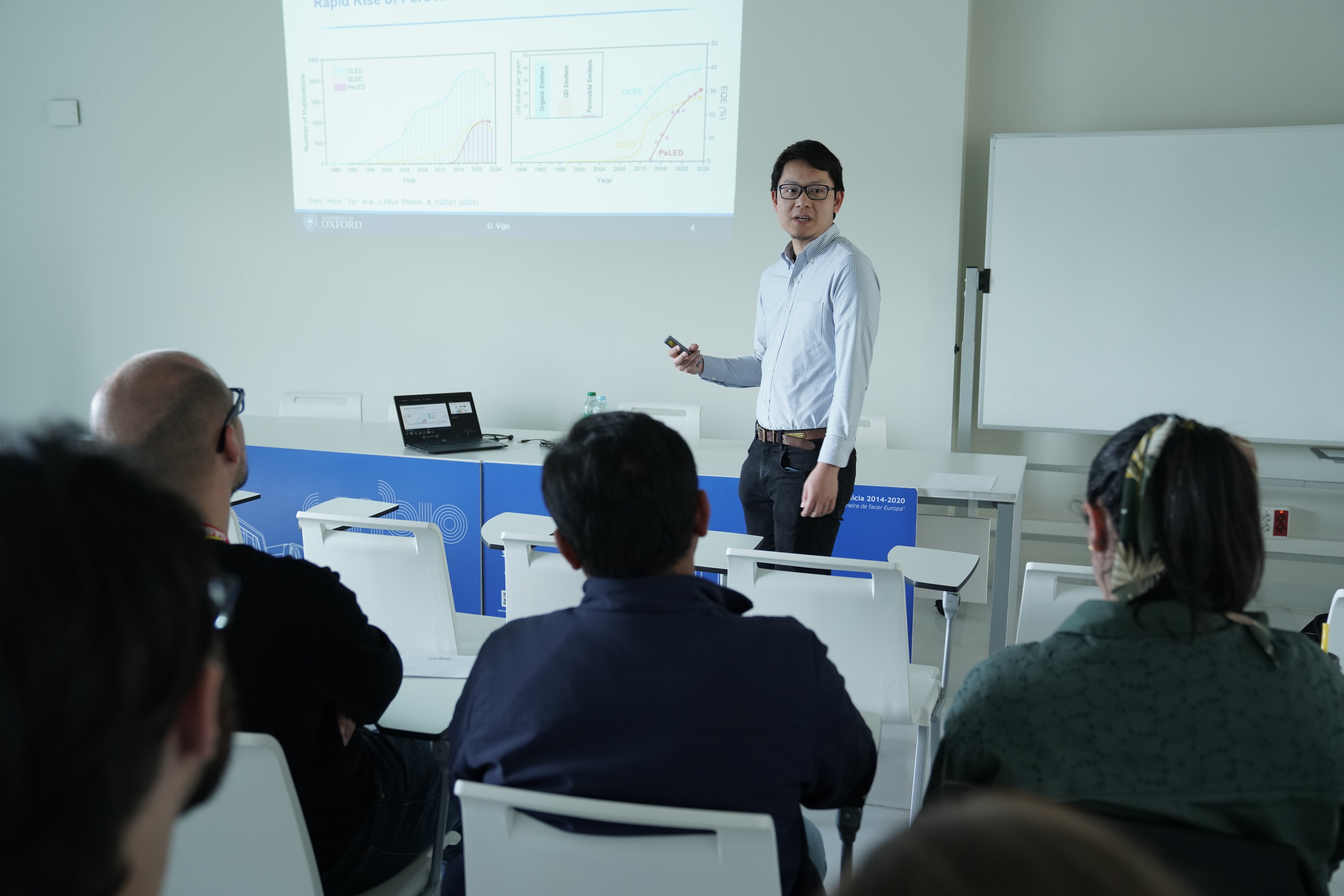Eventos
O xoves 27 de marzo de 2025, Prof. Robert Hoye (Inorganic Chemistry Laboratory, University of Oxford) ofrecerá o seminario “Engineering Defects and Polarised Light Emission from Perovskite Nanocrystals" dentro do ciclo CINBIO Seminar Programme.
Será ás 15:00 horas na Sala de seminarios de Torre CACTI.

ABSTRACT:
Metal-halide perovskites exhibit bright and sharp luminescence, with properties that can be tuned over a wide range through solution processing. This talk firstly examines realising polarised luminescence. Here, CsPbI3 nanoplatelets are self-assembled into an edge-up orientation. Through strong dielectric and quantum confinement, there is large exciton fine structure splitting. As a result, we achieve strong emission from out-of-plane dipoles for the optically bright excitons in these superlattices. In light-emitting diodes, this leads to a high degree of polarisation of 74.4% in electroluminescence, without requiring any photonic structures [1].
We next make use of the versatility of metal-halide perovskites to examine hot carrier cooling [2]. In particular, although defect tolerance has been widely quoted as a key enabling properties of band-edge (cold) carriers, it is unknown whether this can be extended to hot carriers. Through interband and intraband femtosecond spectroscopy, along with excitation-energy-dependent photoluminescence quantum efficiency measurements and kinetic modelling, we show that hot carriers are not universally defect tolerant, but depend on the energy of the traps. The trap density in CsPbX3 (X is Br, I or both) is intentionally tuned by washing the surface with polar antisolvents [3], and we show that hot carriers are directly trapped by defects, without going through a cold carrier intermediate. By showing how defects affect hot carriers, this work leads to design principles that could be used to realise hot carrier solar cells.
This talk finishes with a broader discussion of defect tolerance, the proposed mechanisms, and the open questions to realise this property in broader classes of materials [4].
[1] Ye, …, Hoye, Nat. Photon., 18, 586 – 594 (2024).
[2] Ye, Mondal, …, Hoye, Nat. Commun., 15, 8120 (2024).
[3] Ye, …, Hoye, J. Am. Chem. Soc., 144, 12102 (2022).
[4] Mosquera-Lois, …, Hoye, Nat. Rev. Chem., Just Accepted (2025).
BIO:
Robert Hoye is an Associate Professor of Inorganic Chemistry at the University of Oxford. Prof. Hoye obtained his PhD from the University of Cambridge in 2014, followed by a postdoc at MIT (2015-2016), and two College research fellowships in Cambridge (2016 – 2020). In 2020, he moved to Imperial College London as a Lecturer, then Senior Lecturer (Aug. 2022 -). In Oct. 2022, he moved to Oxford as Associate Professor. Prof. Hoye’s group focuses on developing inorganic semiconductors for energy applications, particularly focussing on lead-free perovskite-inspired materials. His group’s research spans from fundamentals (including spectroscopy and computations) to materials synthesis and applications in photovoltaics, light-emitting diodes and detectors. Hoye also serves as CTO of startup NanoPrint Innovations Ltd., which commercialises a spatial ALD reactor he developed for thin film manufacturing for energy and electronic devices.






